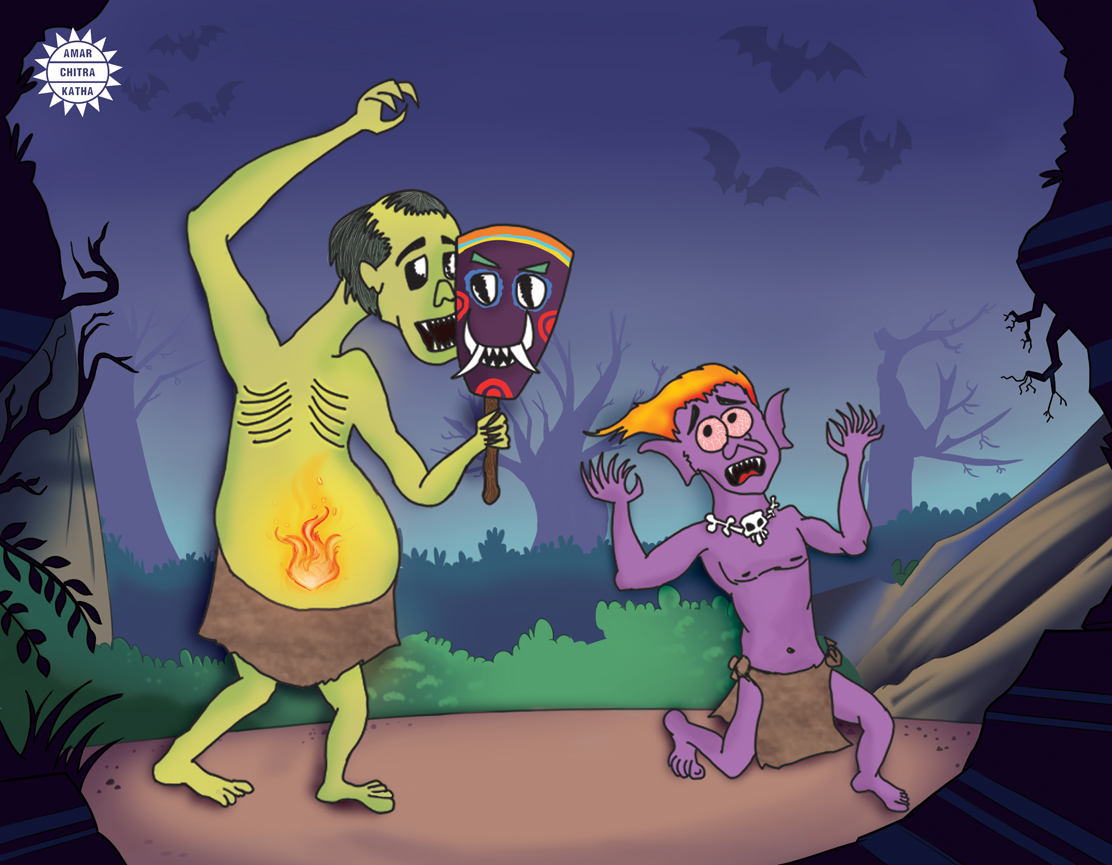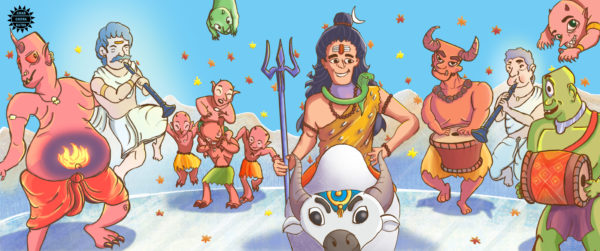By Shakthi Bharathi
What is Shiva the god of? Different people seem to have different answers.
To classical dancers, he is Nataraja, leg raised in the cosmic dance, Tandava. To followers of yoga, he is the Adiyogi, father of all asanas. To many transgender people, he is Ardhanareeshwara, the sacred balance of masculine and feminine.
And to his Ganas — that merry band of ghosts, ghouls, and hobgoblins — he is Bhootnath, the king of spirits.
Shiva’s abode is Mount Kailasha, but he is often shown meditating in graveyards. The Ganas might be the reason for this.
As the story goes, Shiva was searching for a place of great purity where he could immerse himself in tapas. Unable to find such a place, his frustration gave birth to the Ganas. Described as fearsome creatures, they were reviled by everyone else. But, as the Tamil saying goes, ‘Anbe Sivam’ — ‘to love is the essence of Shiva’. He made his home in cemeteries and cremation grounds, where his Ganas would always be welcome and he could meditate in peace.
The Ganas are a diverse lot. Some have extra limbs or animal heads; others have fangs and sharp claws. From the perpetually hungry Preta, whose belly immediately burns up everything it eats, to the shapeshifting Bhoot, who skillfully mimics the human form but cannot cast a shadow, they use their powers for all sorts of mischief.

A wicked thief named Gunanidhi once decided to steal prasad from a nearby Shiva temple. He waited for the devotees to fall asleep, then crept inside. The idol’s lamp had died out, and to navigate the dark better, Gunanidhi used a piece of his own shirt to relight it. He stole the prasad, but on the way out, he was caught by the devotees and thrashed to death. When Yama’s agents arrived to drag him to hell, they were stopped by Shiva’s Ganas. His act of lighting their lord’s lamp, unwitting as it may have been, was still worship to them. Gunanidhi was granted rebirth and led a noble life this time. He became an ardent devotee of Shiva, who made him the god of wealth and gave him a new name, ‘Kubera’.
Stories like this show the Ganas’ attachment to Shiva. They are quick to defend his honour and wage war against his enemies — like the lion-faced Keertimukha, who humbled Rahu, or the fierce Veerabhadra, who cut off Daksha’s head.
But the Ganas are more than Shiva’s bodyguards; they are his friends.
When Sati died and he was consumed by grief, they wept with him. When he found love again, with Parvati, they rejoiced for him. When his path was blocked by a stranger, they raged alongside him, and when the boy was later adopted as Ganesha, they celebrated with him. They take the act of feeling, which can otherwise be isolating, and turn it into a sense of community. 
In many ways, Shiva, the Supreme Being, is at his most human when he is with the Ganas. Perhaps, before the legends took over, they were as human as us.
The Ganas are said to be literate, with their own complex society and culture. Some stories claim they spoke in utter cacophony that only Shiva could understand, but other stories call this language ‘Paisachi’. Was it a real language spoken by tribal groups? Linguists continue to speculate, some linking it to the Pali language of Buddhist scripture and others believing fragments of it have survived in Konkani.
Ash-smeared, garlanded in skulls, and with a fondness for bhang, Shiva has never been a conventional god. Is it possible that many misfits — people shunned by society for physical, mental, or social differences — found home within him? If so, what does it say about our stories and the way we depict them?
The Ganas of yore may not exist anymore, but every year, between October and May, their spirit is well alive through dances like the Theyyam of Kerala and Bhuta Kola of Karnataka.





